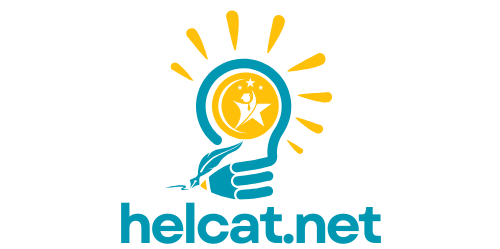When it comes to securing a bright future for children, parents often feel like they’re juggling flaming swords while riding a unicycle. Enter education insurance policies, the safety net that ensures your little ones can pursue their academic dreams without the financial circus act. Imagine a world where tuition fees don’t send you spiraling into a panic—sounds dreamy, right?
With education insurance, parents can rest easy knowing they’ve got a plan in place for those ever-rising costs of education. It’s like having a superhero in your financial corner, ready to swoop in when the bill collectors come knocking. So why not trade in the stress for a little peace of mind? After all, every child deserves a chance to shine without their parents losing their sanity (or their savings).
Education Insurance Policy
Education insurance policies offer a practical solution to rising educational costs. These policies ensure financial protection, allowing families to focus on their children’s academic success.
Definition And Importance
An education insurance policy serves as a financial product designed to cover future educational expenses. It brings security by providing funds for tuition fees and other related costs. Parents gain peace of mind knowing their children’s educational journey remains uninterrupted. Safety nets offered by these policies alleviate financial stress, empowering families to plan effectively. Through this approach, educational aspirations transform from a burden into a manageable goal.
Types Of Education Insurance Policies
Several types of education insurance policies exist, catering to diverse needs. Child education plans secure funds specifically for educational purposes. These plans often include a lump-sum payout upon policy maturity. Endowment policies combine insurance and investment benefits, providing returns while ensuring coverage. Additionally, unit-linked insurance plans (ULIPs) allow for investment in market-linked instruments. Each policy type presents unique advantages, helping parents choose the best fit for their financial circumstances.
Benefits Of Education Insurance Policy

Education insurance policies offer significant advantages for families aiming to secure their children’s future. They facilitate a structured approach to managing educational expenses, ensuring financial peace of mind.
Financial Security For Higher Education
Financial security becomes a top priority when considering higher education. Education insurance policies provide dedicated funds for tuition and related expenses, ensuring that families aren’t burdened by unexpected costs. Parents can choose premiums based on their financial capacity, leading to manageable investments. Most policies accumulate value over time, creating a reliable financial resource upon maturity. This strategy allows families to prepare adequately, supporting children’s aspirations without jeopardizing their financial stability.
Flexibility In Fund Utilization
Flexibility in fund utilization enhances the appeal of education insurance policies. Families can access funds as needed for various educational stages, including school, college, or specialized training. Generally, policyholders decide how to allocate the funds, whether for tuition, books, or other educational resources. Certain policies even offer partial withdrawals in emergencies, providing further financial adaptability. This versatility empowers families to navigate educational expenses effectively while adapting to changing financial situations.
Choosing The Right Education Insurance Policy
Selecting the right education insurance policy requires careful thought and assessment of various factors. Identifying personal financial goals can guide choices that align with educational needs.
Factors To Consider
Coverage amount must be sufficient to meet future education costs. Age of the child impacts the choice, as younger children may benefit from long-term plans. Duration of the policy influences premium costs and growth potential. Flexibility in fund utilization allows families to adjust based on changing priorities. Types of plans, such as child education plans or ULIPs, offer distinct advantages. Premium payment frequency can affect budget management preferences. Evaluating the insurer’s claims settlement ratio helps ensure reliability and trustworthiness.
Common Mistakes To Avoid
Ignoring the importance of thorough research can lead to uninformed decisions. Underestimating future educational expenses often results in insufficient coverage. Focusing solely on premium costs may overlook essential benefits. Neglecting to review policy terms and conditions can create unexpected limitations. Avoiding discussions with a financial advisor can restrict access to tailored recommendations. Skipping comparison of multiple policies often misses better options. Failing to adjust the policy as life circumstances change can undermine financial security.
Comparing Education Insurance Policies
Comparing education insurance policies involves evaluating crucial features and cost factors to find the best option.
Policy Features To Look For
Consider coverage amounts as a primary feature when selecting a policy. Many policies provide varied coverage levels depending on the child’s educational stage. Flexibility in fund utilization remains vital; some policies allow shifting funds between different educational needs. Additionally, look for policies that offer maturity benefits, which provide a lump sum upon completion. Claim settlement ratios reflect an insurer’s reliability; a higher ratio indicates better performance in settling claims promptly. Moreover, riders can enhance coverage by addressing unforeseen circumstances, such as critical illness.
Cost Analysis And Affordability
Cost analysis directly impacts the choice of an education insurance policy. Monthly premiums vary based on coverage levels, the child’s age, and policy duration. Affordable premiums should align with a family’s financial situation, ensuring long-term commitment. Compare premium payment options, such as monthly, quarterly, or annual schedules, to find a manageable arrangement. Overall, understanding the total cost—including potential returns upon maturity—helps determine the best policy for families. Families can evaluate affordability by calculating future educational expenses in relation to the expected benefits of the policy.

